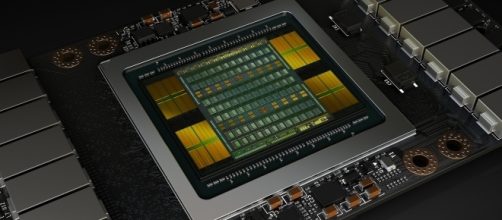Mention Nvidia and the first thing that usually comes to mind is computer gaming. The 24 year-old company got their start by making lightning-fast graphics processors that help create a high-level of realism for many games such as the popular and action-packed Call of Duty or The Witcher. But as evidenced by major announcements at the company’s GPU Technology Conference in San Jose, California this week, Nvidia has set their sights on becoming a dominant player in everything from autonomous driving to machine learning, artificial intelligence (AI) and beyond.
World’s largest graphics processor is introduced
The two-and-a-half hour keynote speech delivered by Nvidia CEO Jensen Huang on Wednesday was packed with important new developments. The headline-maker was the announcement that the company would be releasing the Tesla V100 which, with 21 billion transistors, makes it the largest and most powerful Graphics Processor in the world. “You just can’t make a chip any bigger than this,” Huang told the gathering on Wednesday at the San Jose Convention Center.
While game developers will drool over the new processor’s capabilities, the real purpose behind Nvidia’s new product is to place the company firmly in the race to capture its share of the growing business data center and deep machine learning markets.
Using Nvidia’s Volta graphics architecture, the new processor will also include computing technology that is specifically designed to generate the kinds of mathematical operations necessary for deep machine learning. This is an area that Huang and his company intend to play in. “Deep learning has democratized computing,” said Huang. “Not everyone can program, but everybody has data.”
Nvidia announces partnership with Toyota
Channeling that data in ways that can train machines to rapidly learn and perform key functions plays into the other major announcement from Nvidia on Wednesday. The company has formed a partnership with Toyota where the Japanese car-maker will use Nvidia’s Drive PX artificial intelligence platform for autonomous driving.
Nvidia has been quietly putting together a portfolio of auto companies who are using their AI technology. In addition to Toyota, other automakers that have signed on to use Nvidia’s chips include Audi, Daimler, Volvo, and VW.
Meanwhile, Nvidia’s stock is surging. On the heels of an earnings report this week that showed growth in both their data center and automotive units (while beating Wall Street estimates by nearly 15%), the stock has jumped 13% in the past few days after a 200% rise in 2016.
One of the reasons for Nvidia’s market strength may be the growing number of real-world applications for their technology. At the conference this week, the company awarded funding to six different startup companies nurtured under their “Inception” program.
Winners included firms like Genetesis, who has developed a medical device that uses deep learning to quickly assess chest pain symptoms in emergency rooms, and Athelas, whose portable diagnostic device can create detailed analytics from a single drop of blood.
During their startup awards presentation on Wednesday, Nvidia co-founders Huang and Chris Malachowsky, reminisced about the first time their fledgling company won any kind of award. “It was made of glass and as we passed it around the conference table it broke,” Malachowsky recalled. His company has moved well beyond the days when a glass award was a big deal. They are now competing in an arena where the stakes are higher and the impact could be significant.


